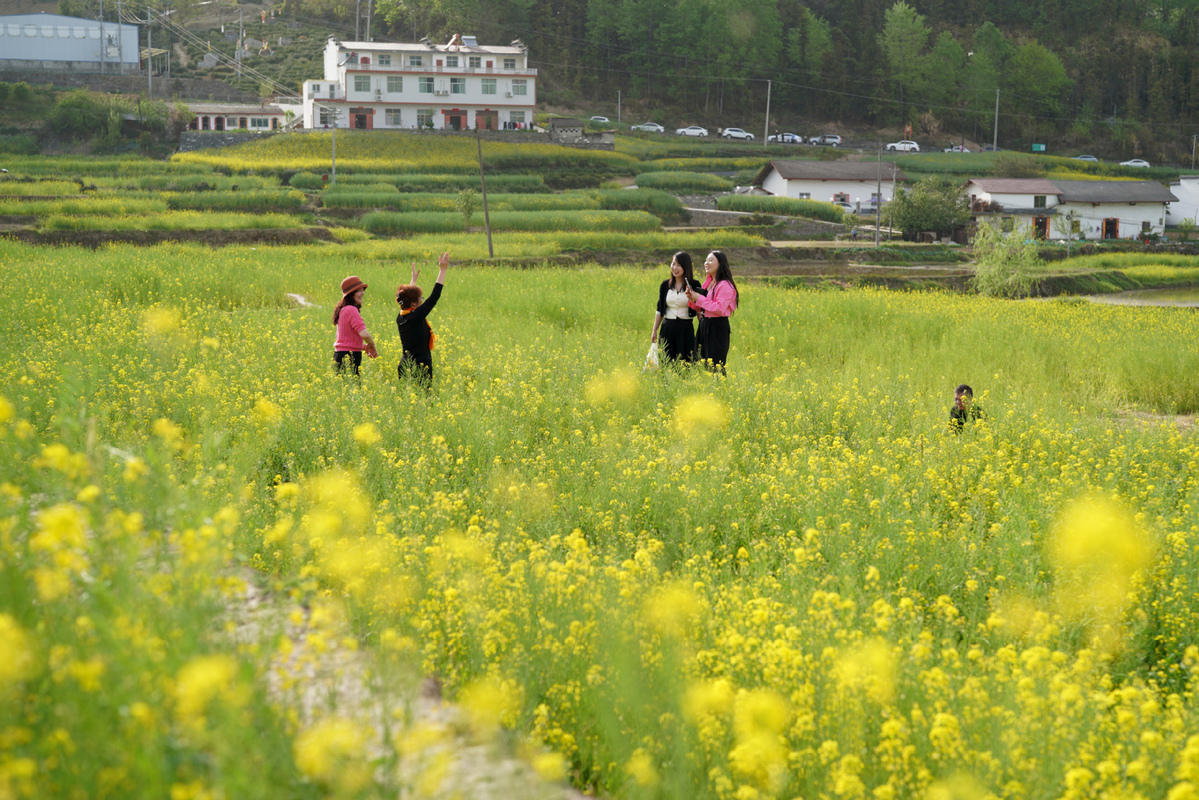In recent years, with the deepening of rural revitalization in China, transportation, public facilit...

In recent years, with the deepening of rural revitalization in China, transportation, public facilities and supporting services in the country's rural areas have significantly improved.[Photo/Xinhua]
Amid a golden sea of canola flowers in the countryside, a caravan can be seen parked on the road, while a fusion of the aromas of coffee and flowers drifts in the air, attracting tourists and perhaps a few bees and butterflies from far and wide.
Zhao Hongsheng, owner of this mobile cafe in Northwest China's Shaanxi province, used a loudspeaker to promote his freshly ground coffee to visitors in Mianxian county of the city of Hanzhong, who primarily visit this location for a glimpse of its iconic flowers.
"The revenue is about 500 yuan (about $68.4) a day," he told Xinhua, noting that this figure is lower compared with a couple of years ago. "The number of tourists didn't decrease but we have more competitors now," Zhao revealed.
Hailing from the city of Baoji in Shaanxi, Zhao has been running his mobile cafe for four years. He drives his vehicle to different countryside tourism destinations depending on the season, and sometimes ventures as far as Xinjiang Uygur Autonomous Region, which is also located in China's northwest.
In recent years, with the deepening of rural revitalization in China, transportation, public facilities and supporting services in the country's rural areas have significantly improved. The countryside, featuring pastoral scenery and an idyllic lifestyle, is luring many visitors, mostly young people working in fast-paced cities, who choose to spend their holidays and weekends camping or hiking in rural settings.
According to the Ministry of Culture and Tourism, in the first quarter of 2025, rural areas across China welcomed 707 million visits, generating revenue totaling 412 billion yuan -- increases of 8.9 percent and 5.6 percent year on year, respectively.
